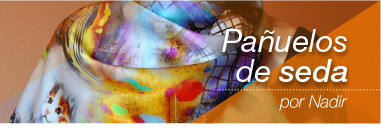Blog
Spanish painting painted in style of Ecce Homo the fresco in the spanish church painted by a minor spanish artist, is now almost a artwork of contemporary art, after the 81-year-old Spanish woman.
At the image on the left, can see the fresco originally depicted Christ with a crown of thorns until Jimenez decided it needed some attention. He left most image is how the painting looked three years ago; the middle image is how it looked in July of 2011, when it was photographed for a catalog of regional religious art. The image on right is how it looked post "restoration"
A year ago, Cecilia Jimenez’s botched attempt to restore a fresco of Christ inspired ridicule and references to monkeys. Now, the 81-year-old Spanish would-be artist is having the last laugh.
The disfigured fresco has drawn more than 40,000 visitors and raised more than 50,000 euros for a local charity in the town of Borja since gaining worldwide attention. It has spurred the town to put the likeness on merchandise it hopes will sell for years to come. And Jimenez has even had her own art exhibit, with two dozen of her other works showing through Aug. 24 in the town of 5,000.
Gimenez and a local council are to sign a deal next week to share profits from merchandise featuring the image, with the artist getting 49 per cent and the council the rest, said councillor Juan Maria Ojeda, who listed the tourism and income figures.
The turnaround is apparently quite the relief for the Spanish retiree, who was overwhelmed by the attention a year ago.
“Now it seems like everyone’s happy,” local paper Heraldo de Aragon quoted the once-media shy Jimenez as saying in Sunday’s edition. “I’m grateful that things have quieted down.”
The fresco originally depicted Christ with a crown of thorns in a style known as “Ecce Homo” (Behold the Man). The church painting was for decades a little-known piece of religious art by a minor Spanish artist. It had remained in peaceful obscurity in the Misericordia sanctuary since it was painted in 1930.
That was until Jimenez, a longtime devotee of the work, decided it needed some attention because it was flaking due to the damp church air. Her attempt didn’t go so well, and some dubbed Jimenez’s retouching of it “Ecce Mono” — Behold the Monkey.
But soon the retouched version grew popular. The image started appearing — without authorization — on T-shirts and cellphone covers, coffee mugs and wine labels. People arrived in Borja asking to see the painting.
The council started charging an entrance fee of 1 euro, giving the money to the Sancti Spiritus charitable foundation, which used the windfall to help pay bills at a care home for 60 elderly people. The council also got lawyers to establish copyright and draw up a merchandising agreement which will see the image put on plates, postcards and cigarette lighters, among other items.
“It’s a timely agreement,” Ojeda, the councillor, told The Associated Press by telephone from Borja. “The money is going to good causes.”




